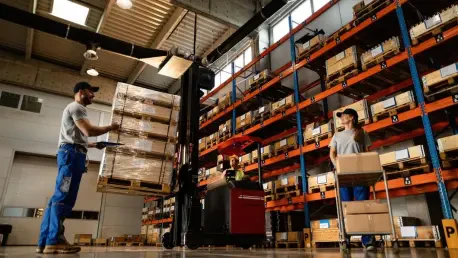Today, we’re thrilled to sit down with Rohit Laila, a seasoned veteran in the logistics industry with decades of expertise in supply chain and delivery. Rohit’s passion for technology and innovation has positioned him as a thought leader in navigating the complex challenges of supply chain resilience, particularly in specialized sectors like wiring and electrical components. In this conversation, we’ll explore the critical importance of resilience in the wiring industry, the impact of rising global shipping costs, the role of strategic stocking and digital tools, and how sustainability and partnerships are shaping the future of supply chains.
How do you define supply chain resilience in the context of the wiring industry, and what makes it unique compared to other sectors?
Supply chain resilience in the wiring industry, to me, means the ability to anticipate, adapt, and recover from disruptions while keeping projects on track. It’s not just about reacting to issues but foreseeing potential bottlenecks—whether that’s a delay in raw materials like copper or a geopolitical snag affecting shipping. What makes it unique compared to other sectors is the combination of long lead times, strict compliance requirements, and the lack of easy substitutes for many components. In industries like retail, you might swap out a product, but in wiring, especially for defense or aerospace, you’re often locked into specific, certified parts. That raises the stakes significantly.
Can you elaborate on how the recent 12 percent surge in global shipping costs has affected the wiring sector?
Absolutely. This surge, driven by freight delays and port congestion, has hit the wiring sector hard because we rely heavily on global supply lines for materials like copper and prefabricated cables. The increased costs trickle down, raising the price of raw materials and, ultimately, the end products. It squeezes margins for distributors and manufacturers alike. Some companies are absorbing the costs to stay competitive, while others are passing them on to customers, which can strain relationships. We’re also seeing longer delays, which disrupt project timelines, especially in time-sensitive industries like transportation or infrastructure.
Visibility is often cited as the foundation of resilience. What does achieving visibility mean for a wiring distributor in practical terms?
Visibility is about having a clear, real-time picture of your entire supply chain—from raw material suppliers to end customers. For a wiring distributor, it means knowing where your inventory is, tracking lead times, and understanding potential risks like regional instability or supplier issues before they hit. Practically, it’s using data from logistics platforms and supplier updates to map out the flow of goods. It’s also about constant communication with partners to spot early warning signs, like a port backlog that could delay a critical shipment. Without this, you’re just guessing, and in this industry, guessing can cost you big.
Strategic stocking seems to be a key tactic for resilience. How do you decide which wiring components to stock more of to mitigate risks?
Strategic stocking is all about prioritizing based on risk and impact. We look at components that are hard to source quickly—think specialty cables with long manufacturing cycles or parts tied to strict certifications. We analyze historical data on usage trends, procurement delays, and past disruptions to identify what’s most likely to cause a bottleneck. For instance, if a certain type of wire has only a handful of approved suppliers, we’ll stock more of it. It’s a balancing act, though, because overstocking ties up capital. So, we’re constantly refining our approach based on demand forecasts and market conditions.
Why do just-in-time inventory models often fall short in the wiring sector, and how does strategic stocking address those shortcomings?
Just-in-time models assume quick turnaround and easy access to materials, but in the wiring sector, that’s often not the case. Lead times can stretch for months, especially for custom or certified components, and when you factor in delays from global shipping or regulatory hurdles, waiting until the last minute to order is a recipe for disaster. I’ve seen projects in aerospace grind to a halt because a single cable wasn’t available on time. Strategic stocking flips that script by building a buffer of critical items, so even if a delay hits, you’re not left scrambling. It’s proactive rather than reactive.
Digital tools are increasingly important for managing inventory risks. What technologies have you found most valuable in this space?
Digital tools have been game-changers for us. We rely on inventory management software that integrates real-time data on stock levels, order frequency, and supplier lead times. These platforms can flag risks—like a sudden spike in demand or a delayed shipment—before they become crises. Predictive analytics also help us anticipate trends based on historical patterns. The biggest value is in responsiveness; if a customer’s needs shift or a supplier falls through, we can pivot quickly. That said, these tools aren’t foolproof—data accuracy and system integration can be hurdles—but when used right, they’re indispensable.
Sustainability is becoming a practical necessity in supply chains. How has this focus influenced the way you source materials in the wiring industry?
Sustainability has shifted from a nice-to-have to a must-have in our sourcing decisions. With materials like copper and specialty alloys under environmental scrutiny, we’re prioritizing suppliers who can demonstrate responsible practices—whether that’s through robust ESG reporting or commitments to reducing carbon footprints. New regulations in regions like the EU and North America are pushing this hard, and non-compliant suppliers risk being sidelined. For us, it’s about building stability; partnering with sustainable manufacturers means less exposure to regulatory disruptions or raw material volatility. It’s a long-term play for resilience.
Partnerships are described as shock absorbers in the wiring supply chain. How do strong relationships help manage disruptions effectively?
Partnerships are the glue that holds everything together when things go sideways. In the wiring sector, where delays or shortages can derail entire projects, having trusted relationships with manufacturers and customers makes all the difference. It’s about open communication—knowing you can call a supplier to negotiate priority allocation during a crunch or work with a customer to adjust timelines. These relationships let us anticipate needs and solve problems before they escalate. For example, during a recent export restriction, a longstanding partnership with a supplier helped us secure critical inventory while others struggled. Trust and transparency are everything.
Looking ahead, what is your forecast for the future of supply chain resilience in the wiring industry?
I think the future of resilience in the wiring industry will be defined by deeper integration of technology and collaboration. We’ll see more advanced tools, like AI-driven forecasting, becoming standard to predict disruptions with greater accuracy. At the same time, the push for sustainability will tighten supply chains, forcing companies to rethink sourcing and build even stronger partnerships. Geopolitical tensions and cost pressures aren’t going away, so resilience will mean staying agile—investing in strategic inventory, diversifying supplier bases, and doubling down on visibility. Companies that adapt to these trends will thrive; those that don’t will struggle to keep up.









